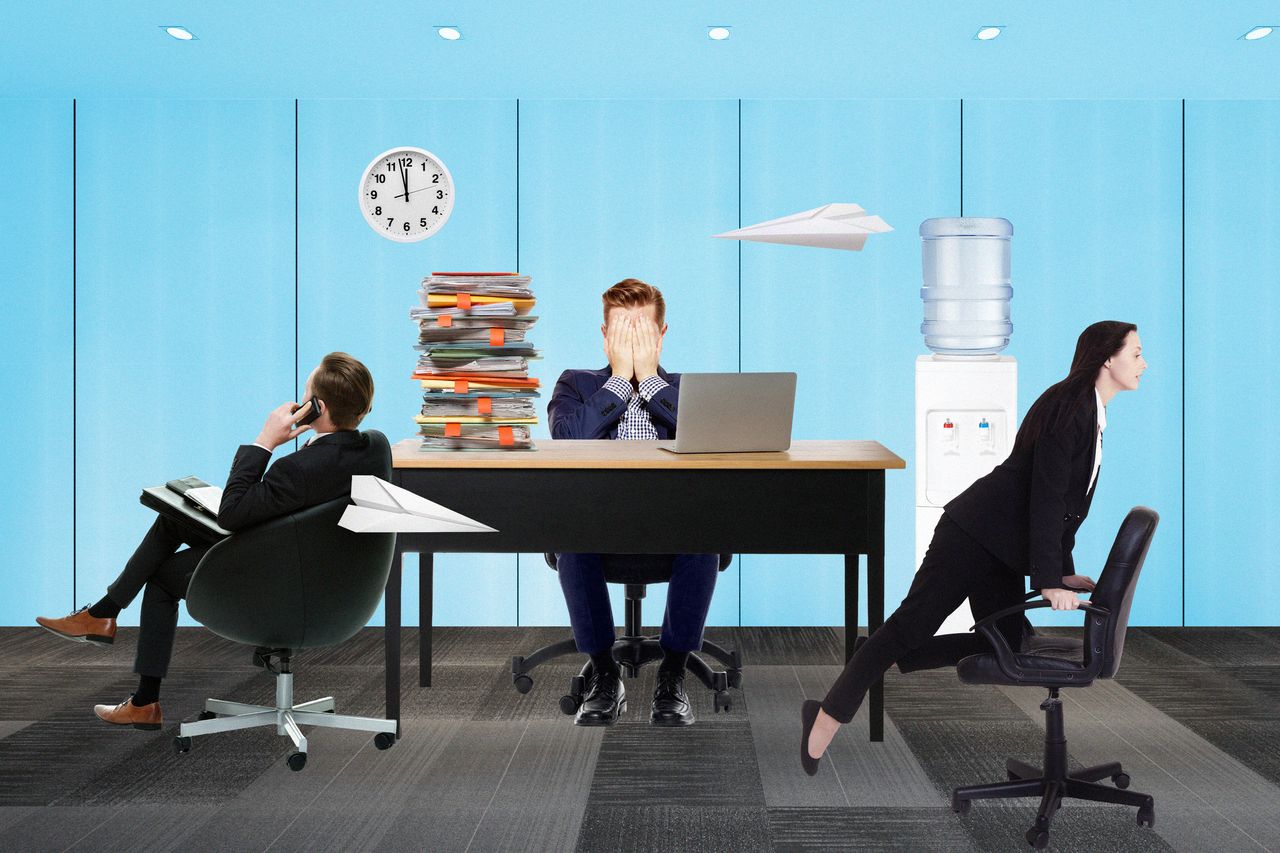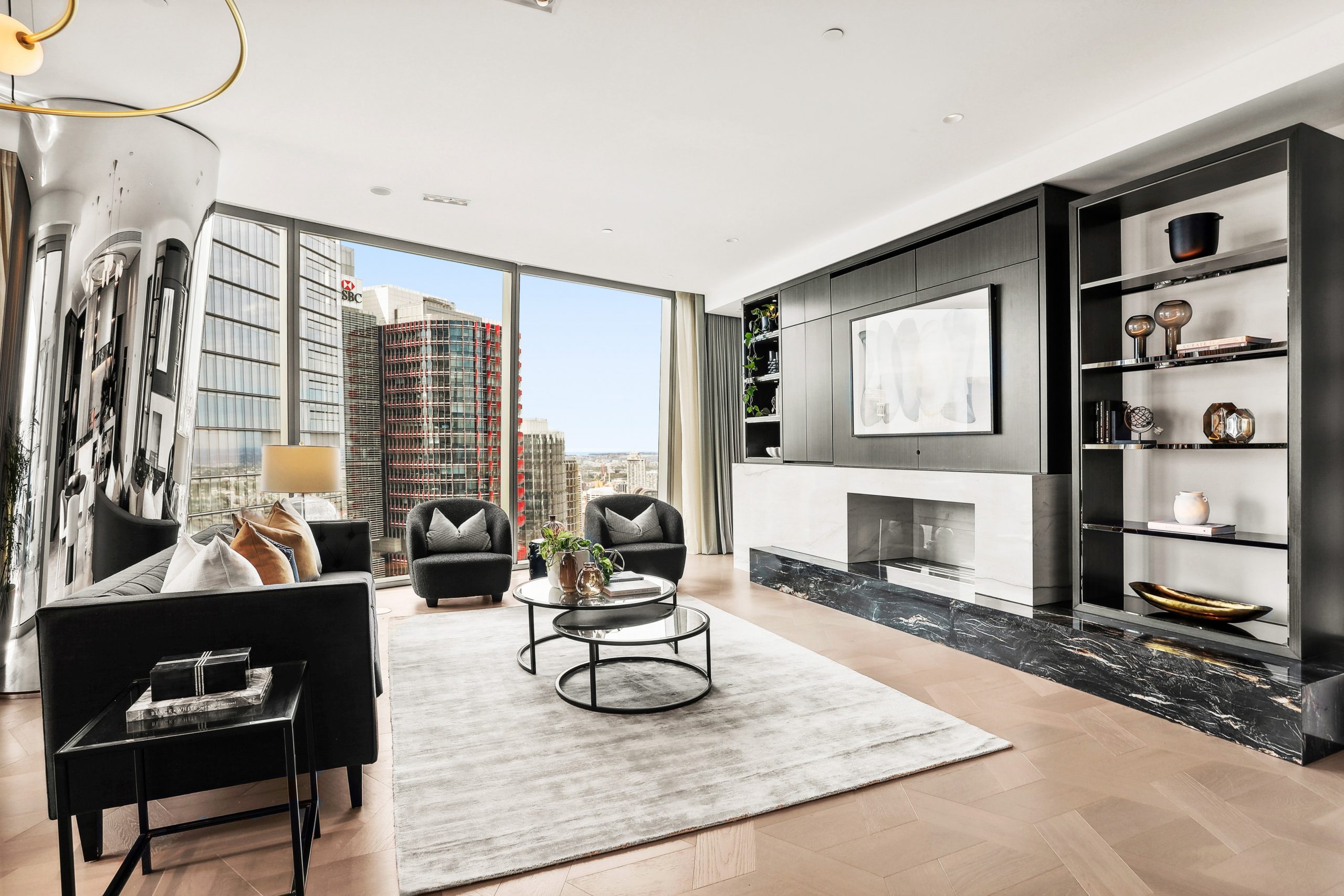The Real Reason You’re Having a Hard Time Getting Things Done at the Office
Working from home altered our brains. We need more office time to fix them.
If you still don’t have your office groove back, there might be a scientific explanation. Hybrid work arrangements mess with our brains.
Frustrated bosses who survey their half-empty officescapes say it makes no sense that somebody who worked full time in an office before 2020 can’t show up like they used to. But neurologists and behavioural scientists say the collective amnesia for effectively working alongside each other makes perfect sense to them.
Some workers have lost the muscle memory in their minds required to get jobs done in an open-office setting and, like flabby biceps, that muscle has to be exercised to strengthen, says S. Thomas Carmichael, professor and chair of the neurology department at UCLA’s David Geffen School of Medicine.
After years of remote work, our brains’ selective attention skills and ability to block out distractions is weakened, Carmichael says. Those who prefer to work from home might not like one of his remedies: Make yourself work from the office more often.
“The brain is really good at understanding contingencies, so if we just say ‘I’ll just get this done when I’m at home,’ we don’t learn it as well,” he says.
Drowning in a sea of ‘what ifs?’
Knowing how effective working from home can be has created a simmering unhappiness, says organisational psychologist Cathleen Swody. Many workers lose their uninterrupted autonomy in social office spaces.
Maryia Babinova, a senior software engineer in New York City, tried going into her office several days a week back in 2021 and found it nearly impossible to be productive.
“The first 30 to 45 minutes of my day were taken up by saying hello to everybody,” she says.
Babinova says even small office time wasters have become a major annoyance. A trip to the office coffee machine, for instance, can take as long as 15 minutes when there’s a line. At home, she says, caffeine is at her fingertips, keeping her on task.
Now, Babinova only shows up in person when her team members visit from another city. At the office, she works on tasks that don’t require a heavy mental lift so she can get them done.
Constantly comparing 2023’s office realities with alternative remote-work setups can add to workers’ readjustment woes, says Laura M. Giurge, an assistant professor at the London School of Economics, who teaches a course on the science of time at work.
When people start to ponder what life would be like if their circumstances were different, they can rapidly end up drowning in a sea of “what ifs,” a psychological concept known as counterfactual thinking.
“Now, when we go to the office, we have the counterfactuals of our home offices,” Giurge says. “We know how much better things would be…how much more work we might get done.”
It’s hard to un-remember how nice it was to take the dog for a walk midday, or how helpful it was to log out at 4 p.m. to get dinner started and log back in later. Running through scenarios of how time could be better spent takes up precious brainpower, distracting us from the real work at hand, psychologists say.
Unsettling quiet
Getting used to working with background noise takes time.
Many workplaces are quieter now because they are less crowded, and that means there can be periods of dead silence punctuated by sudden noise that feels magnified, jarring people again and again all day long. Even toggling between work-from-home solitude one day to a noisy office the next can have a similar effect.
“We have to habituate ourselves to all those distractions all over again in order to get any good work done,” says Vanessa Bohns, a professor of organisational behaviour at Cornell University. She points to research that shows it takes 20 minutes to get used to background noise, but five minutes of silence before bringing back the noise forces the brain’s process to start over again.
Many workers and a few bosses now view the office as a place to collaborate, but not the only place to do head-down individual work.
In a large-scale survey published by Microsoft last year, 84% of employees cited connecting with co-workers as their key motivation for working in person. More than 70% said they would go to the office more frequently if they knew their direct team members or work friends would be there.
“The data shows we can’t only see the office as a place to get focused work done,” said Colette Stallbaumer, Microsoft’s general manager of Future of Work.
Lynn Dang, a software developer in the Dallas area, uses her three mandatory office days for face-to-face meetings and work that doesn’t require intense concentration.
When she transitioned back to the office last year, she noticed she couldn’t concentrate on reading code like she could while working from home. Loud team discussions and overhearing one-sided conversations amid the cubicles from people who were on the phone or dialled into video meetings created a constant assault on her senses.
“It was like I’m gonna have to find something to do on my to-do list that would make me productive,” she says. “Otherwise I’m going to have to keep working overtime or working over the weekend just to get stuff done.”
 Copyright 2020, Dow Jones & Company, Inc. All Rights Reserved Worldwide. LEARN MORE
Copyright 2020, Dow Jones & Company, Inc. All Rights Reserved Worldwide. LEARN MORE
This stylish family home combines a classic palette and finishes with a flexible floorplan
Just 55 minutes from Sydney, make this your creative getaway located in the majestic Hawkesbury region.
Continued stagflation and cost of living pressures are causing couples to think twice about starting a family, new data has revealed, with long term impacts expected
Australia is in the midst of a ‘baby recession’ with preliminary estimates showing the number of births in 2023 fell by more than four percent to the lowest level since 2006, according to KPMG. The consultancy firm says this reflects the impact of cost-of-living pressures on the feasibility of younger Australians starting a family.
KPMG estimates that 289,100 babies were born in 2023. This compares to 300,684 babies in 2022 and 309,996 in 2021, according to the Australian Bureau of Statistics (ABS). KPMG urban economist Terry Rawnsley said weak economic growth often leads to a reduced number of births. In 2023, ABS data shows gross domestic product (GDP) fell to 1.5 percent. Despite the population growing by 2.5 percent in 2023, GDP on a per capita basis went into negative territory, down one percent over the 12 months.
“Birth rates provide insight into long-term population growth as well as the current confidence of Australian families,” said Mr Rawnsley. “We haven’t seen such a sharp drop in births in Australia since the period of economic stagflation in the 1970s, which coincided with the initial widespread adoption of the contraceptive pill.”
Mr Rawnsley said many Australian couples delayed starting a family while the pandemic played out in 2020. The number of births fell from 305,832 in 2019 to 294,369 in 2020. Then in 2021, strong employment and vast amounts of stimulus money, along with high household savings due to lockdowns, gave couples better financial means to have a baby. This led to a rebound in births.
However, the re-opening of the global economy in 2022 led to soaring inflation. By the start of 2023, the Australian consumer price index (CPI) had risen to its highest level since 1990 at 7.8 percent per annum. By that stage, the Reserve Bank had already commenced an aggressive rate-hiking strategy to fight inflation and had raised the cash rate every month between May and December 2022.
Five more rate hikes during 2023 put further pressure on couples with mortgages and put the brakes on family formation. “This combination of the pandemic and rapid economic changes explains the spike and subsequent sharp decline in birth rates we have observed over the past four years,” Mr Rawnsley said.
The impact of high costs of living on couples’ decision to have a baby is highlighted in births data for the capital cities. KPMG estimates there were 60,860 births in Sydney in 2023, down 8.6 percent from 2019. There were 56,270 births in Melbourne, down 7.3 percent. In Perth, there were 25,020 births, down 6 percent, while in Brisbane there were 30,250 births, down 4.3 percent. Canberra was the only capital city where there was no fall in the number of births in 2023 compared to 2019.
“CPI growth in Canberra has been slightly subdued compared to that in other major cities, and the economic outlook has remained strong,” Mr Rawnsley said. “This means families have not been hurting as much as those in other capital cities, and in turn, we’ve seen a stabilisation of births in the ACT.”
This stylish family home combines a classic palette and finishes with a flexible floorplan
Just 55 minutes from Sydney, make this your creative getaway located in the majestic Hawkesbury region.






















